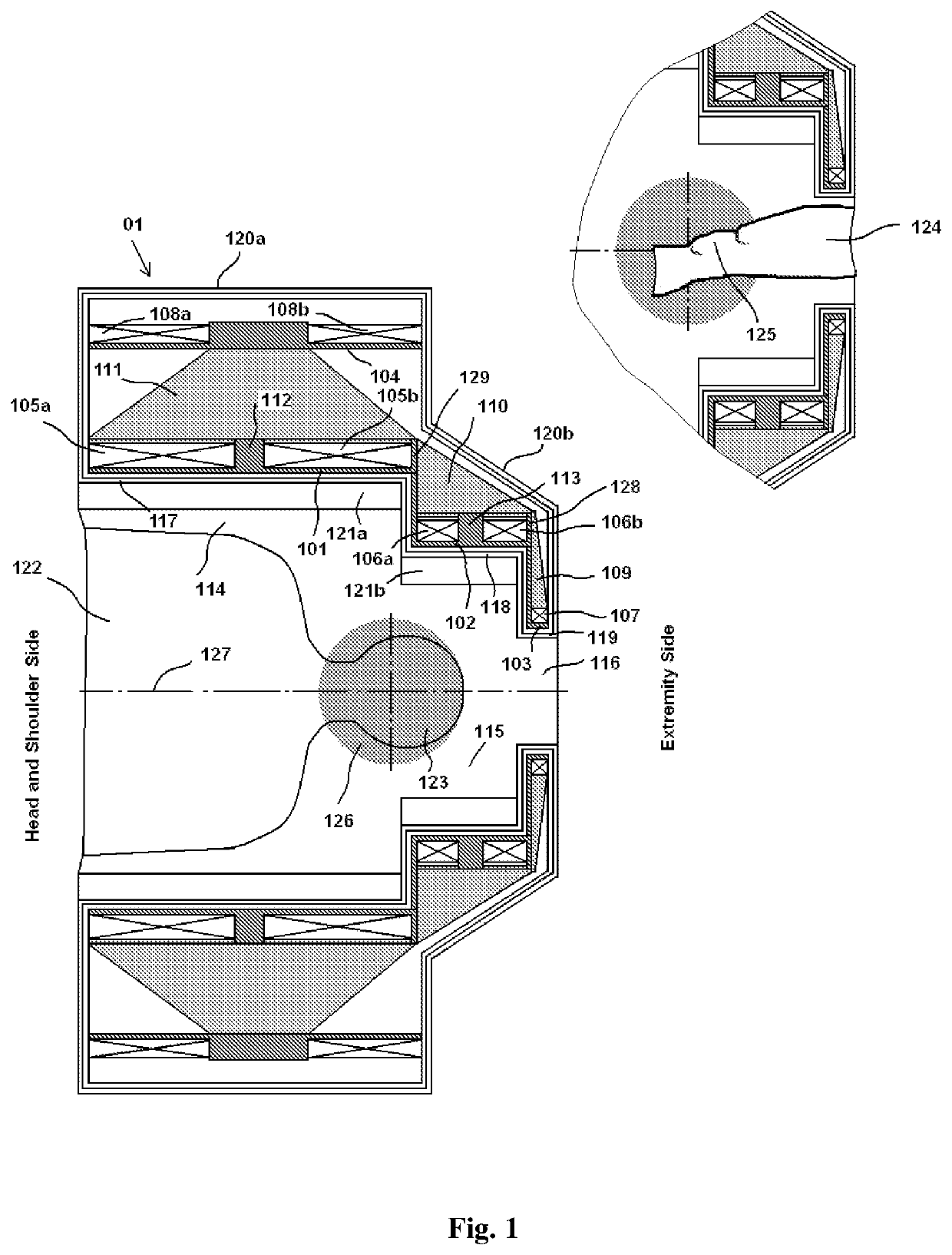Magnet for head extremity imaging
a superconducting magnet and head extremity technology, applied in the direction of superconducting magnets/coils, measurement devices, instruments, etc., can solve the problems of claustrophobia, expensive whole body magnets used in producing images, and many people suffering from claustrophobia
- Summary
- Abstract
- Description
- Claims
- Application Information
AI Technical Summary
Benefits of technology
Problems solved by technology
Method used
Image
Examples
example 1 (
3.0 T Magnet)
[0072]FIG. 5 schematically illustrates a superconducting magnet according to a first embodiment of the present invention. The magnet employs five primary coils (two coils at the first former segment, two other coils at the second former segment and one at the third former segment) and one shield coil. In broad overview, the magnet has a cold bore length of approximately 0.92 meters and a cold bore largest inner radius and smallest inner radius of approximately 0.46 and 0.13 meters, respectively. The magnet has a dsv which is approximately spherical with a diameter of approximately 27 centimetres.
[0073]FIG. 5 shows the magnet and the field within the dsv. FIG. 6 shows the calculated stray external fields and axial magnetic field generated by the magnet. FIG. 7 shows the calculated magnitudes of the total magnetic field generated by the magnet within the magnet's various coils. FIG. 8 shows the calculated magnitudes of the total electromagnetic forces generated by the mag...
example 2 (
1.5 T Magnet)
[0075]FIG. 10 schematically illustrates a 1.5 T superconducting magnet design using a structure according to a second embodiment of the invention.
[0076]The magnet employs five primary coils (two coils at the first former segment, two other coils at the second former segment and one at the third former segment) and two shield coils. In broad overview, the magnet has a cold bore length of approximately 0.78 meters and a cold bore largest inner radius and smallest inner radius of approximately 0.45 and 0.16 meters, respectively. The magnet has a dsv which is approximately elliptical with an axial diameter of approximately 20 centimetres and a radial diameter of approximately 30 centimetres.
[0077]FIG. 10 shows the magnet and the field within the dsv. FIG. 11 shows the calculated stray external fields and axial magnetic field generated by the magnet. FIG. 12 shows the calculated magnitudes of the total magnetic field generated by the magnet within the magnet's various coils....
PUM
| Property | Measurement | Unit |
|---|---|---|
| magnetic field | aaaaa | aaaaa |
| inner diameter | aaaaa | aaaaa |
| inner diameter | aaaaa | aaaaa |
Abstract
Description
Claims
Application Information
 Login to View More
Login to View More - R&D
- Intellectual Property
- Life Sciences
- Materials
- Tech Scout
- Unparalleled Data Quality
- Higher Quality Content
- 60% Fewer Hallucinations
Browse by: Latest US Patents, China's latest patents, Technical Efficacy Thesaurus, Application Domain, Technology Topic, Popular Technical Reports.
© 2025 PatSnap. All rights reserved.Legal|Privacy policy|Modern Slavery Act Transparency Statement|Sitemap|About US| Contact US: help@patsnap.com



